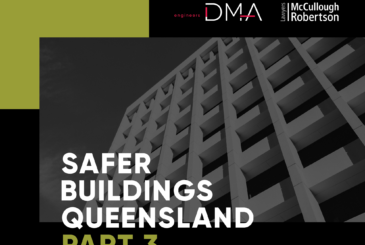
By Koroush Keshavarz – Senior Associate, Principal Fire Engineer.
Combustible cladding is no laughing matter. The dangers of highly flammable cladding were brought to the world’s attention when Grenfell Tower in London went up in flames, killing 72 residents. Governments around the world responded. The Queensland government was among them, with new legislation requiring all building owners to undergo a process to determine whether their property has combustible cladding, and if so, to take measures to address the potential fire risk associated.
What is the new legislation?
The newly introduced Queensland legislation is the Building and Other Legislation (Cladding) Amendment Regulation (2018). This was an amendment to Building Regulation 2006, specifically introduced to address concerns regarding flammable cladding.
The legislation introduces a range of new obligations for building owners, described in detail further below. The vast majority of building owners should, by now, be aware of whether their building qualifies under the checklist provided by the QBCC. If you are still unsure, please get in touch and we will help you take the necessary steps.
What will it cost?
Costs are extraordinarily difficult to predict. The initial assessment costs will depend entirely on the fees of the building industry professional you work with to carry out that part of the process. If it is determined that your building has combustible cladding that needs to be replaced, then you will need to investigate the cost of removing old cladding and, if necessary, replacing it.
One significant point of contention with this new legislation is the refusal from the Queensland government to provide any financial assistance to affected building owners. Additionally, the federal government has made it clear that they too will not be providing funding for cladding to be replaced. This leaves many building owners in a difficult position, particularly as removing and replacing flammable cladding may prove to be costly.
There is genuine concern in some quarters that these increased costs may affect insurance premiums and the housing and construction industry more broadly, possibly leading to further unforeseen effects as the costs roll on.
What is happening in the rest of the country?
Elsewhere, state governments are stepping up. Victoria has recently agreed to support the cost of replacing cladding on affected buildings. In New South Wales, similar legislation to that in Queensland has also been introduced. Owners are required to register their properties if they fit a particular building type and have cladding fitted that falls within certain categories (e.g. composite panels and insulated cladding systems).
In the long term, in Queensland, this could turn into an extremely expensive process, particularly for building owners and organisations that own more than a single building. An interesting question regarding responsibility has arisen due to this process. The state government has imposed significant additional costs onto building owners through the mandatory cladding audit process but has yet to dip into its own pocket to assist them. Even the cost of the audit and review process must be borne by building owners – often cutting into already thin margins.
What do you need to do?
The process involved is quite straightforward once you understand your obligations. There are three major parts to the process. Parts 1 and 2 require the building owner to assess whether their buildings are affected by the legislation and required to proceed to the next stages.
During part 1, the owner or building manager needs to identify any potentially combustible material on their building. If they are eligible for part 2, they should have obtained the assistance of a building industry professional to conduct this assessment prior to the deadline on July 31st.
If your building is required to progress to Part 3 of the process, you will now need to engage a registered fire engineer to assist with the remaining steps towards compliance. The fire engineer’s details must be registered with the QBCC by October 31st, although they are not necessarily required to begin work by that date.
Having engaged a registered the fire engineer with the QBCC, the next step is a Building Fire Safety Risk Assessment (BFSRA). Your fire engineer will complete this in order to assess whether there is any risk to the fire safety of the building from combustible cladding present on the building exterior They may also make recommendations as to how this increased fire risk may be addressed. The BFSRA must be finalised and submitted by May 3, 2021.
Find out more
It’s important that you understand your obligations under this new legislation. If you would like to speak with a professional, please call us on 1300 296 248.
If you would like to know about the QBCC cladding assessments, click here.


